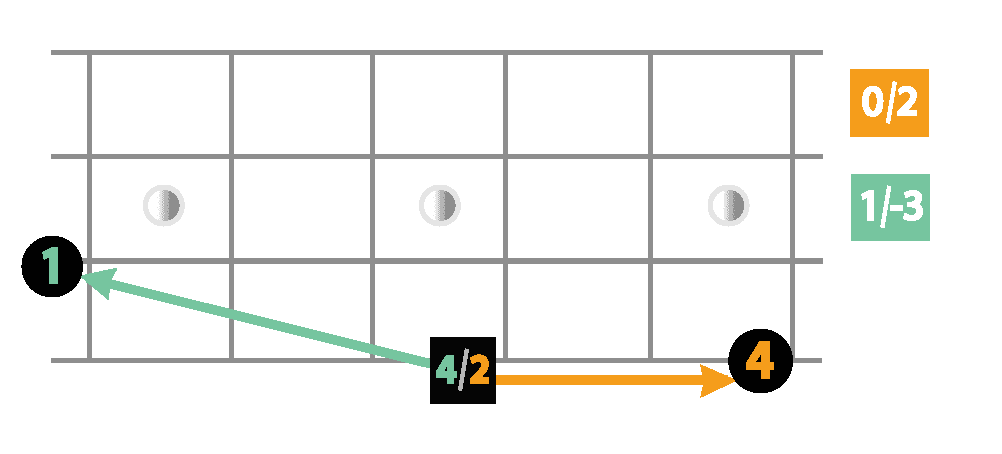The Interval Formula started with me calling an octave a “2 by 2” and a fifth a “2 by 1″…
A “2×2” is a mnemonic for one great way of fingering the octave on the bass: two frets over, two strings over. Same principle for the fifth…
Mnemonics rock my world when teaching because they drive complex matters home fast (See my articles on mnemonics, Part 1 and Part 2).
While designing the wall chart (AKA the Music Theory Cheat Sheet!), there was color coding involved and arrows and fingerings and the light bulb went off: why not take this concept all the way and apply this idea to all intervals!
The results are great, because once again, thinking of intervals this way (ie: measured on the fret board!) really drives home:
- how notes relate
- the way intervals work
- how strings relate to each other
- best fingerings for intervals
- and it creates a productive way to practice the intervals
The Wall Chart features the interval formula in a color coded fashion, complete with best-practice fingerings, numbers of half steps and most important ways to finger them.
Best way to work with it? pick an interval a day and wrap your mind around it. Theory needs practice (its name, then, is really deceiving 😉 )
I have created 45 minutes of video to go with the wall chart. Overview, exercises and one on the epic IF – Interval Formula.
Interval are the basic building blocks of music theory – if you are able to find them on the fretboard, it really pays off: for scales, triads, chords, but also extensions, alterations, compound intervals… it all starts with the basic intervals within the octave. 0 to 12 half steps. Know them on the bass with good fingering, who and how they work and you have a huge leg up. It is necessary to practice them a bit, so that’s where the chart comes in handy. This video shows practice suggestions. This one gives an overview.
But now check out the video on the Interval Formula here:

